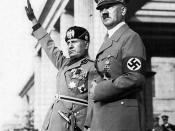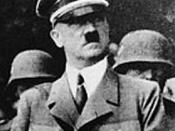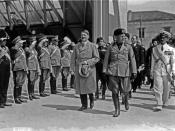Hong Kong Diploma of Secondary School Education
History
School-based Assessment Task One
Study outline
Name of student: | Tsang Ka Wai | Class: | 5B | Class no.: | 35 |
Selected elective (please put ( in the appropriate box):
Comparative studies | ( | Issue-based studies | â¡ | Local heritage studies | â¡ |
Title
Compare Fascism and Nazism during the inter-war period |
Study outline
During the inter-war period, 1919-1939, Europe did not live peacefully since many European countries could not handle the post-war problems well. Due to the weaknesses of democratic governments, totalitarianism therefore rose. In 1924, Fascism and Benito Mussolini in Italy rose to power. In 1933, Nazism and Adolf Hitler in Germany seized power. Both Fascism and Nazism had similarities, and differences between them. We can study the similarities and differences by analyzing the reasons for their rise to power, their major ideas, domestic ruling means, foreign policies and the rulers' skills and ability. |
First of all, let's compare the reasons for their rise to power in both Italy and Germany first. The Paris Peace Conference was held in 1919, Italy was one of the victorious countries but the Big Three dominated the decision-making process. She could only receive little of land she desired. Besides, Germany was defeated in the WWI and harshly punished by the Treaty of Versailles, Germans believed that the Weimar government had betrayed them by signing the treaty. Both governments were not capable of tackling the post-war problems and the foundations of parliamentary government were weak. Italians and Germans saw the settlement as a great humiliation and did not trust the governments, so they would like to have mighty leaders to protect the countries' interests. People's desire for stronger leadership gave rise to the Nazism and Fascism. |
However, there were some differences. In 1929, the Great Depression was sparked off and Germany lost... |


